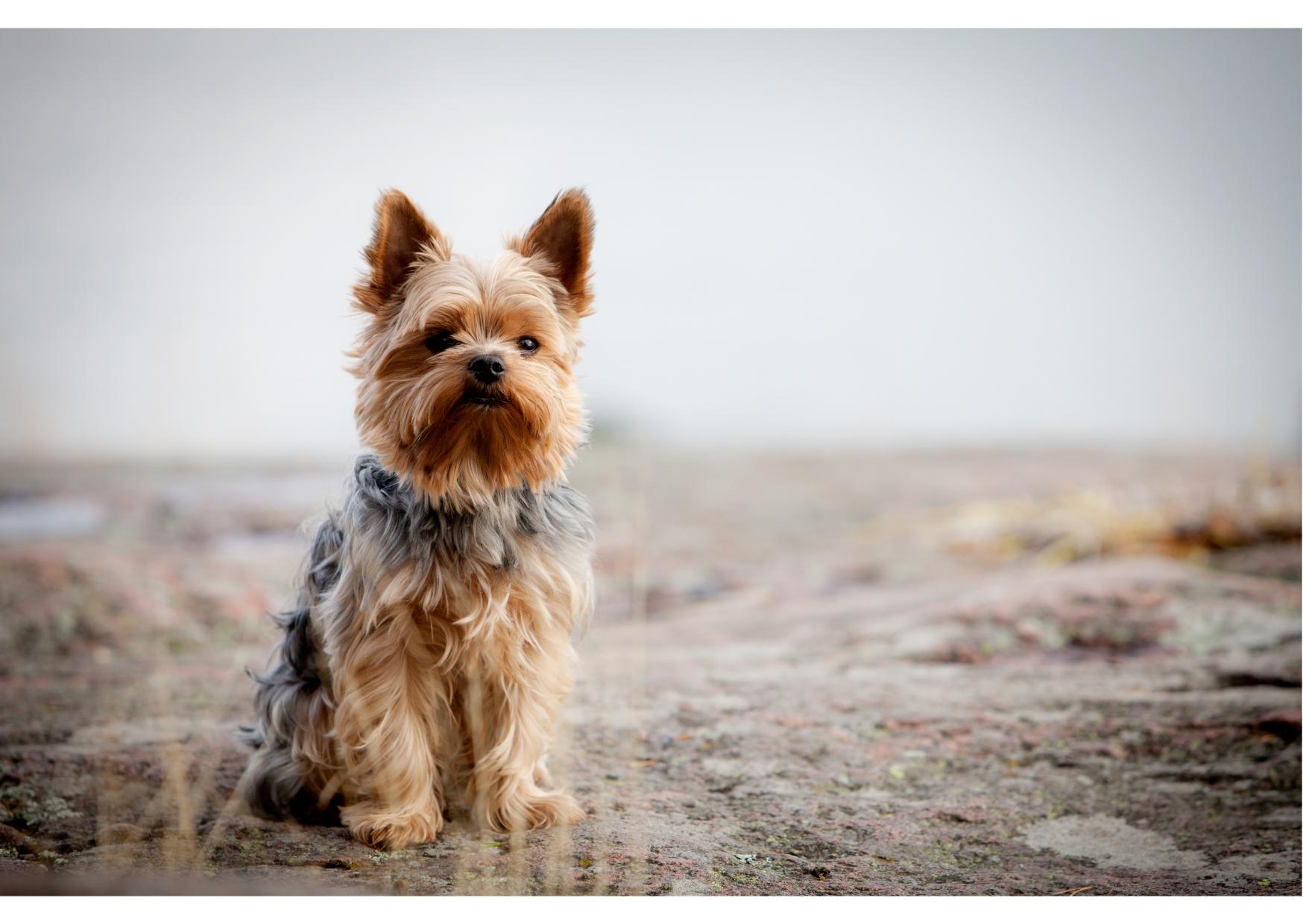YORKSHIRE TERRIER
| Group: | Toy Group |
|---|---|
| Size: | Small |
| Temperament: | Affectionate, Sprightly, Tomboyish |
| Height: | 7–9 Inches (male), 7–9 Inches (female) |
| Weight: | 1.5-3 kg (male), 1.5-3 kg (female) |
| Life Expectancy: | 12-15 years |
| Origin: | UK |
| Coat Length: | Long |
| Coat Type: | Silky |
| Color: | Black & Tan Blue & Gold Blue & Tan Black & Gold |
About
The Yorkshire Terrier is unconcerned by its diminutive size and possesses the bravery, vigour, and confidence that one might not anticipate from a toy sized terrier. It is a smart dog that takes to obedience training well. It can, however, be yappy, snappy, and demanding and is prone to taking advantage of owners who allow it to get away with behaviour that would be inappropriate in a larger dog.The Yorkshire Terrier was created to eradicate the rat and mouse infestation infesting the northern English mine shafts and woollen mills. Through selective breeding with the tiniest individuals, it gradually shrunk down to the point where its female owner could carry it around as a fashion accessory.
Nutrition
The Yorkshire Terrier should thrive on premium dog food, whether it is produced commercially or is made at home under the guidance and approval of your veterinarian. Any diet must be suitable for the dog's age (puppy, adult, or senior). Watch your dog's calorie intake and weight level because some dogs are prone to obesity. Treats can be a valuable training aid, but giving them in excess can lead to obesity. Dogs require a diet that includes a variety of carbs, vegetables, fruits, and proteins. A protein or protein dish, such as chicken, fish, lamb, or turkey, should be the main component of your Yorkie's diet.. If you have any worries about your dog's weight or diet, consult your veterinarian. Fresh water that is clean should always be accessible.
Ideal Meal Breakdown
Protein
36
Fat
20
Carbohydrates
36
Others
8
Exercise
Even small dogs need to be physically and mentally active to maintain good health. Yorkies will benefit from occasional short bursts of activity, like chasing after a tennis ball in the backyard, as well as moderate exercise, like slow walks with their owner. Your Yorkie will likely be able to see new sights and burn off energy with just a short walk twice daily. Dog sports like obedience or agility will challenge his mind while also keeping him physically active, which is good for his health.
Grooming
Because the Yorkshire Terrier's coat resembles human hair so much, it should be handled with care. The coat must be brushed every day if it is kept long. The hair on the top of the head should be cut short or pulled up into a topknot to prevent eye irritation. Every other week or so, the Yorkie will require a bath. Every week, check the ears for debris or infection symptoms.
Training
Yorkies are extremely intelligent, devoted to their owners, and eager to please. With the Yorkie, lavish praise and treats for good behaviour will be much more effective than strict punishment. The Yorkie needs to be socialised with unfamiliar situations, people, and other dogs beginning at a young age. Introduce him to new situations gradually and always in a cheerful and calm environment. These experiences ought to be satisfying. Yorkies, despite their diminutive size, can participate in and excel at canine sports like rally, agility, and obedience. Many Yorkies work alongside their human partners in professions like therapy.
Health
In general, Yorkshire Terriers are healthy dogs, and responsible breeders check their stock for ailments like eye abnormalities and luxating patella, a dislocated kneecap formerly known as a "trick knee" in humans. It's important to take precautions to keep the Yorkie's jumping height in check, especially when they're young.
History
The northern English counties of Yorkshire and Lancashire are where the Yorkshire Terrier originated in the middle of the nineteenth century. In the late Victorian era, it evolved into a chic lapdog for proper English ladies, but its roots were unmistakably working-class. It is believed that the breed was developed by Scottish weavers who immigrated to the English north country with their Scottish terriers. The genetic makeup of the Yorkie includes several varieties of now-extinct Scottish terriers, as well as still-existing terriers like the Skye and Dandie Dinmont. The addition of Maltese blood is suggested by one historical source. The tough little terriers that the Scots weavers had developed were small enough to fit into the crevices of textile mills and hunt rodents there. The Yorkie's long, silky coat was made fun of, and it was implied that its finely textured hair came from the looms. The Yorkie's native region was known for both its mining and textile industries, and many Yorkies worked as exterminators in coal mines. The Yorkie gained popularity and size ashrank to better fit its new job description as a ladies' pet .
